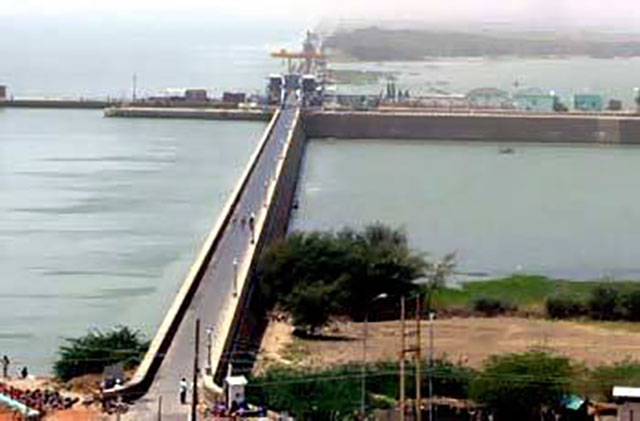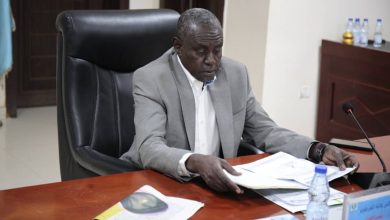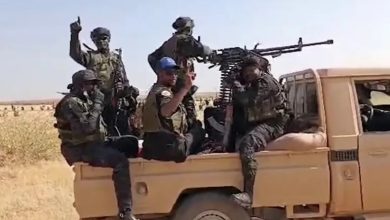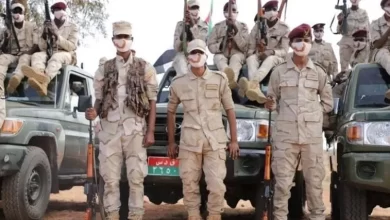Jabal Awlia, the sacred Men’s mountain: the battle for exiting the bottle neck

Report by Talal Mudathir
It was at dawn Sunday that the people of Jabal Awlia town, southern suburbs of the national capital Khartoum, were awakened at the sounds of gunshot. It was about six am. It was a signal of fierce battles that flared up between the Sudanese army and the rebellion Militia of the Rapid Support Forces (RSF).
Cutting off the Shambat Bridge speeds up the battle
With the cutting off of the Shambat Bridge passage, people started seeing vehicles and trucks affiliated to the militias leaving Bahari using the Soba Bridge, that links between the East Nile Locality and Khartoum, heading for Jabal Awlia area. This is the area that hosts the Nogomi Air Base, of the Sudanese Army. This was a base used to hosts military helicopters, it contained no fighter planes. The base was created back in 1976 in the Jabal Awlia military area, then it was moved to Khartoum Base in 1991. However, it was once again returned to Jabal Awlia area, to help accommodate the increasing number of Helicopters and choppers affiliated to the Sudanese Airforce.
This base has been a location of tit for tat between the army and the militia that claimed, at one time on Sunday, to have controlled the base, a claim denied by the Armed forces spokesperson, brigadier General Nabill Abdala who reaffirmed that the base was still in the firm hands of the Sudanese army.
An area with a special status
The area of Jabal Awlia is important for the militias as it will help them control down town Khartoum and through it they could link their lines of supplies to the east, via the High way across the White Nile and to the Southern parts of Omdurman. Denying the militias control over this area would surely speed up the final battle in Khartoum. And the Sudanese army made sure to deny them this benefit, cutting off the militias wings in different areas such as the Jamooya villages and the Salaha area, thus the militias are unable to reach this strategic location
Strike at the dam, will it submerge Khartoum?
This area hosts Jabal Awlia Dam, a reservoir erected by the Egyptian government back in 1937 with the aim of holding Nile water to meet the Egyptian need during dry seasons. It also was conceived to provide a secondary benefit which is to keep the level of water behind the dam, upstream, high so that this water would be used for irrigation of the White Nile Livelihood projects at some time during Sudanese history, but these projects are no longer viable.
Furthermore, and after the construction of the High Dam in Egypt, the usefulness of this dam dwindled. Not only that but many countries in the Nile Basin region have been talking about the need to get rid of the dam which holds back water behind and forms a lake that causes a loss of 2 billion cubic meter of water in evaporation, annually.
This situation spurred the government of Omar Bashir in 2012, to issue a presidential decree stipulating a study on removal of the dam and of making use of the reservoir and the 2 billion cubic meter lost annually in evaporation. However, the committee continued dragging its feet and the project remains at that phase, a useless dam to both Sudan and Egypt which was no longer in need of the Jabal Awlia dam following the construction of the High
Dam in the nineteen sixties of the last century. The High dam holds quantities of water forty times the capacity of Jabal Awalia
What is the status quo now?
For the second day running the fighting continues around Jabal Awalia between the army and the Rapid Support forces militias which flocked in since the early hours of the day from the Sports City in Khartoum via Al Hawa street and the Bagalat Salama towards Jabal Awlia, with the aim of providing back up for the forces that are in the area.
Fierce fighting has continued since early hours of the day with the aim of having upper hand and control over the area and thus enable the militia achieve the objective of controlling the location and reestablishing the link with their troops in Omdurman and at the same time have control of the unpaved road, the only road there that would enable them implement this plan. But the area as it is named after, and because of the many, sacred men buried there, remains impenetrable. And, mind you, with the blessing and the incantation of these sacred persons, and thanks to the incantations of the army that “We draw our Support from God, our supporter, but they have no divine backer or supporter “ the area continue holding off and persevering.



